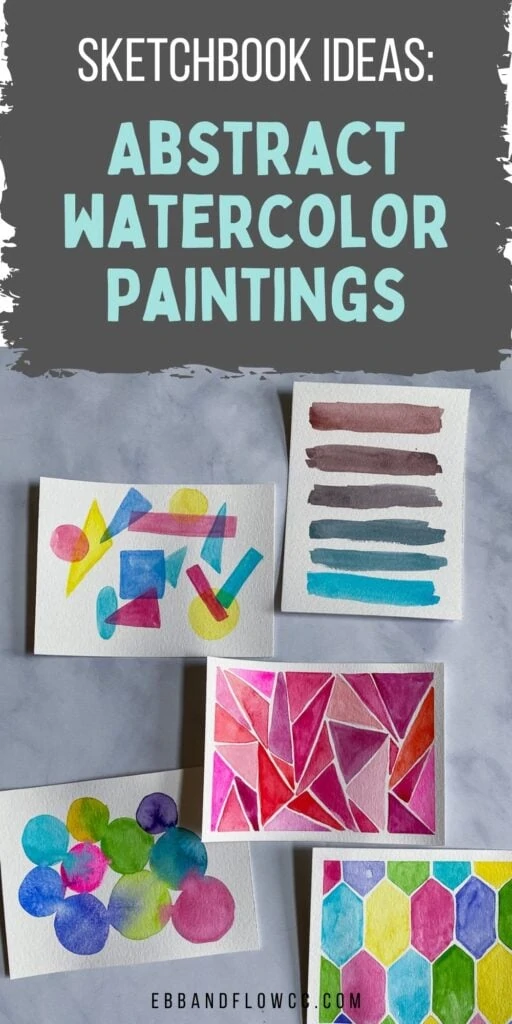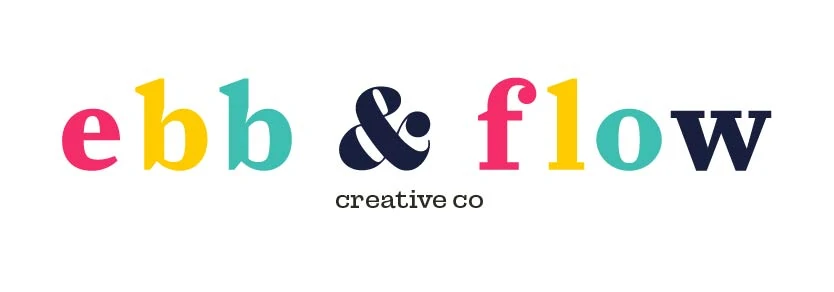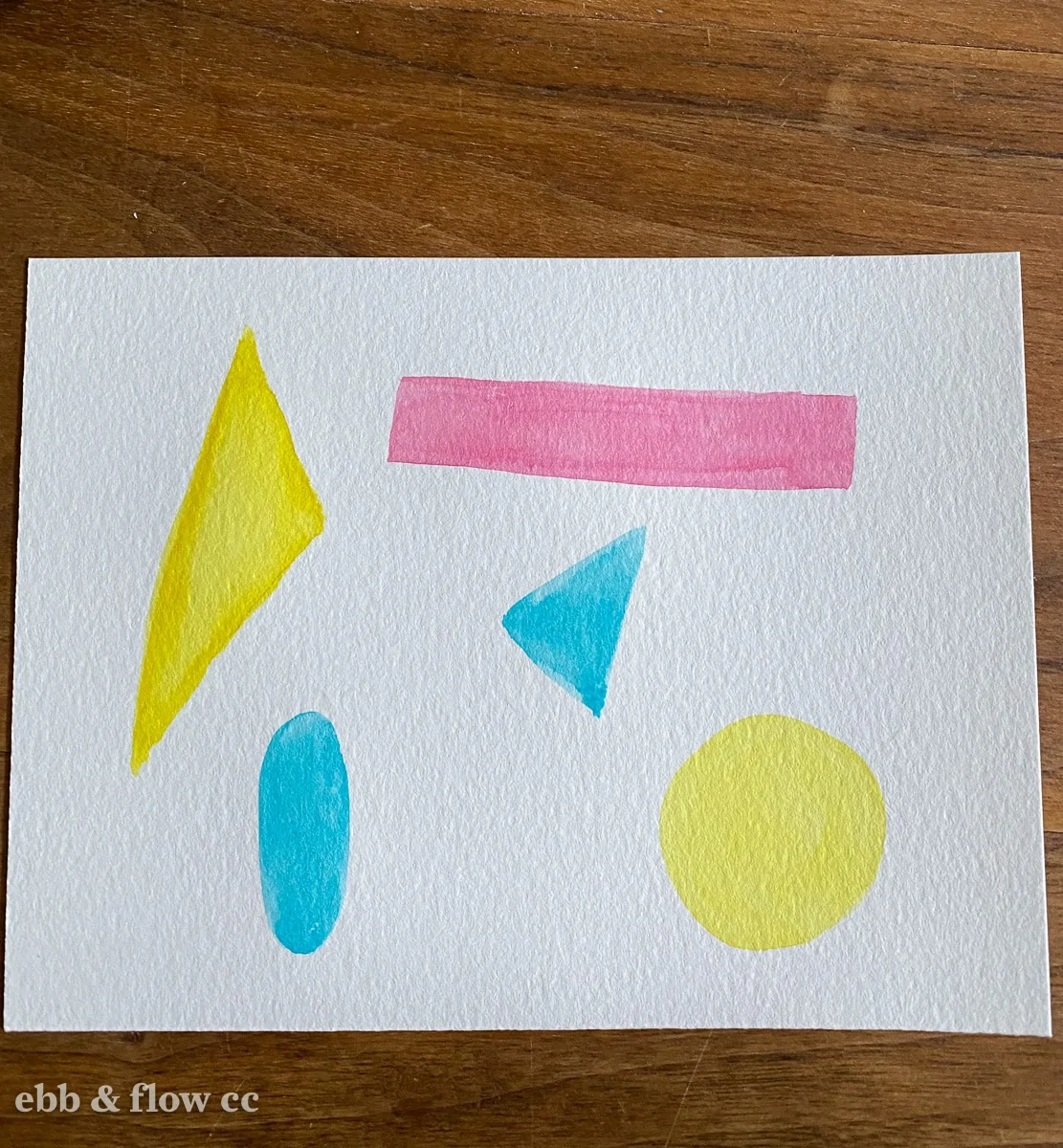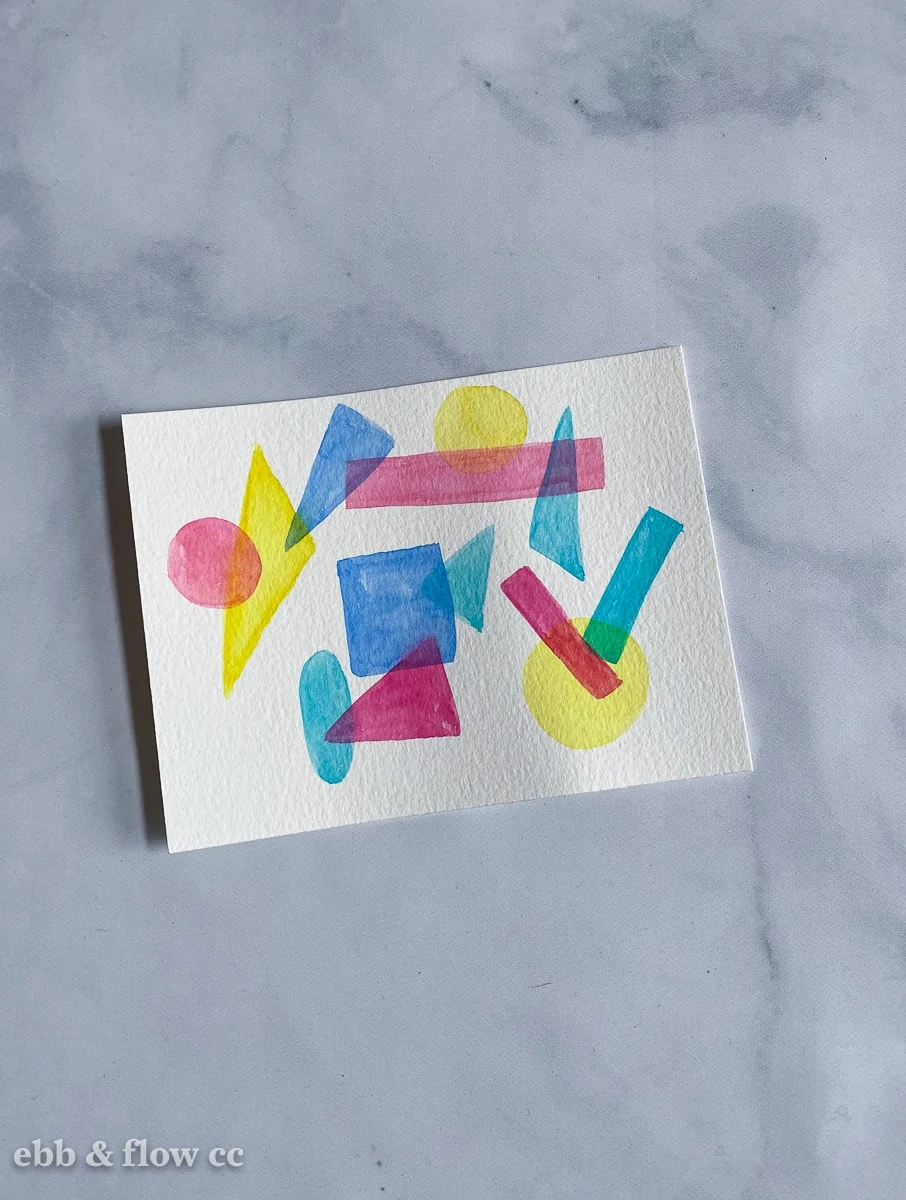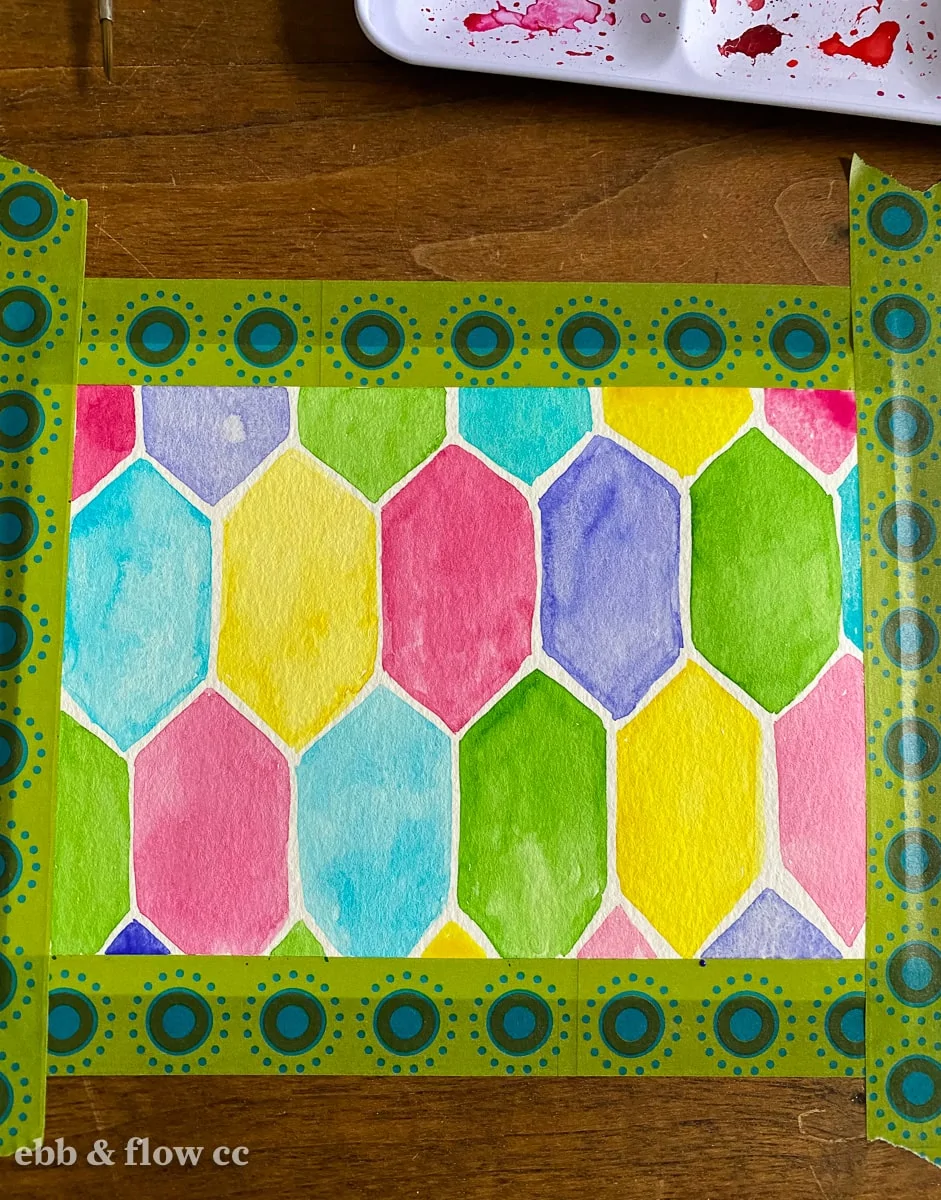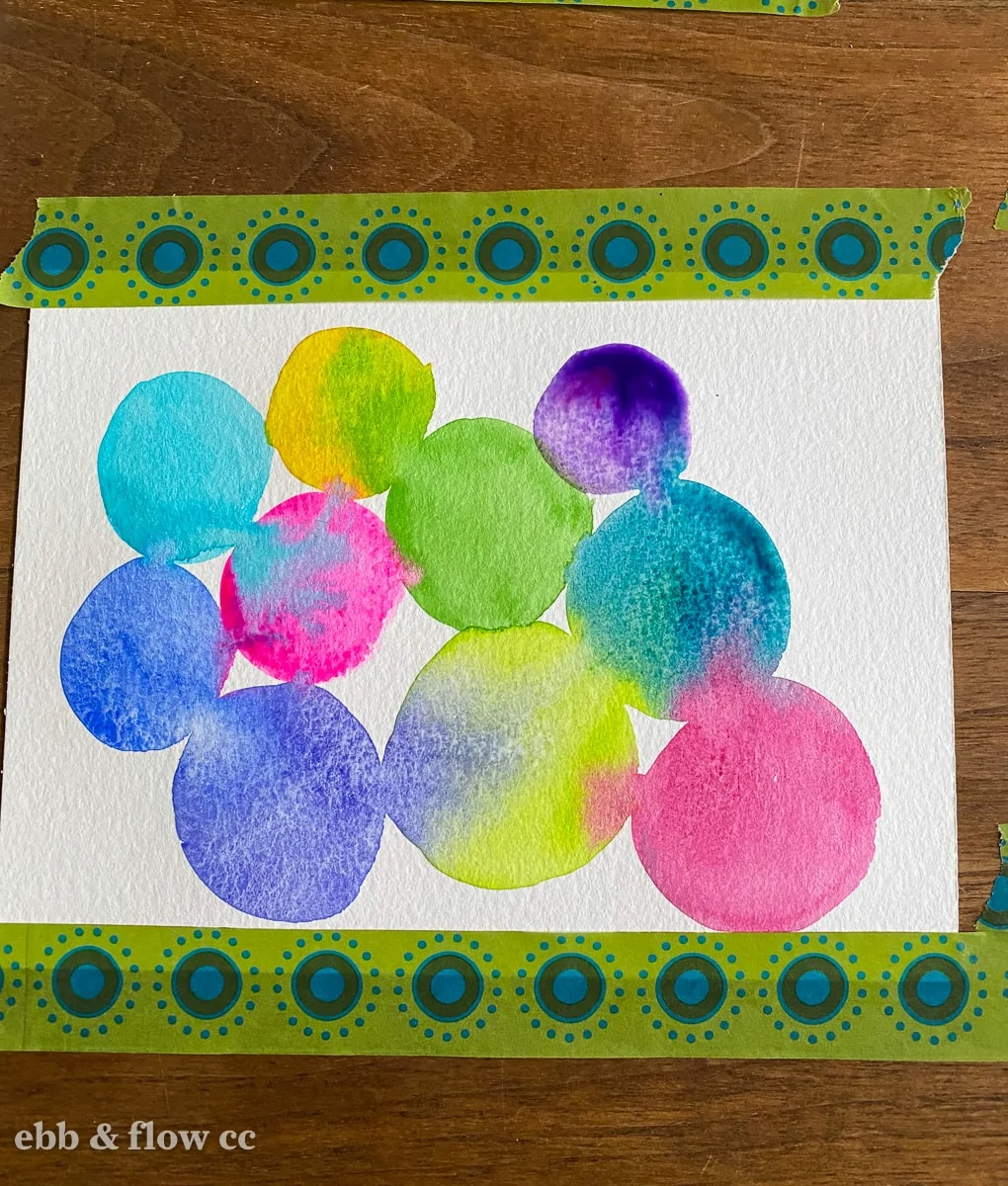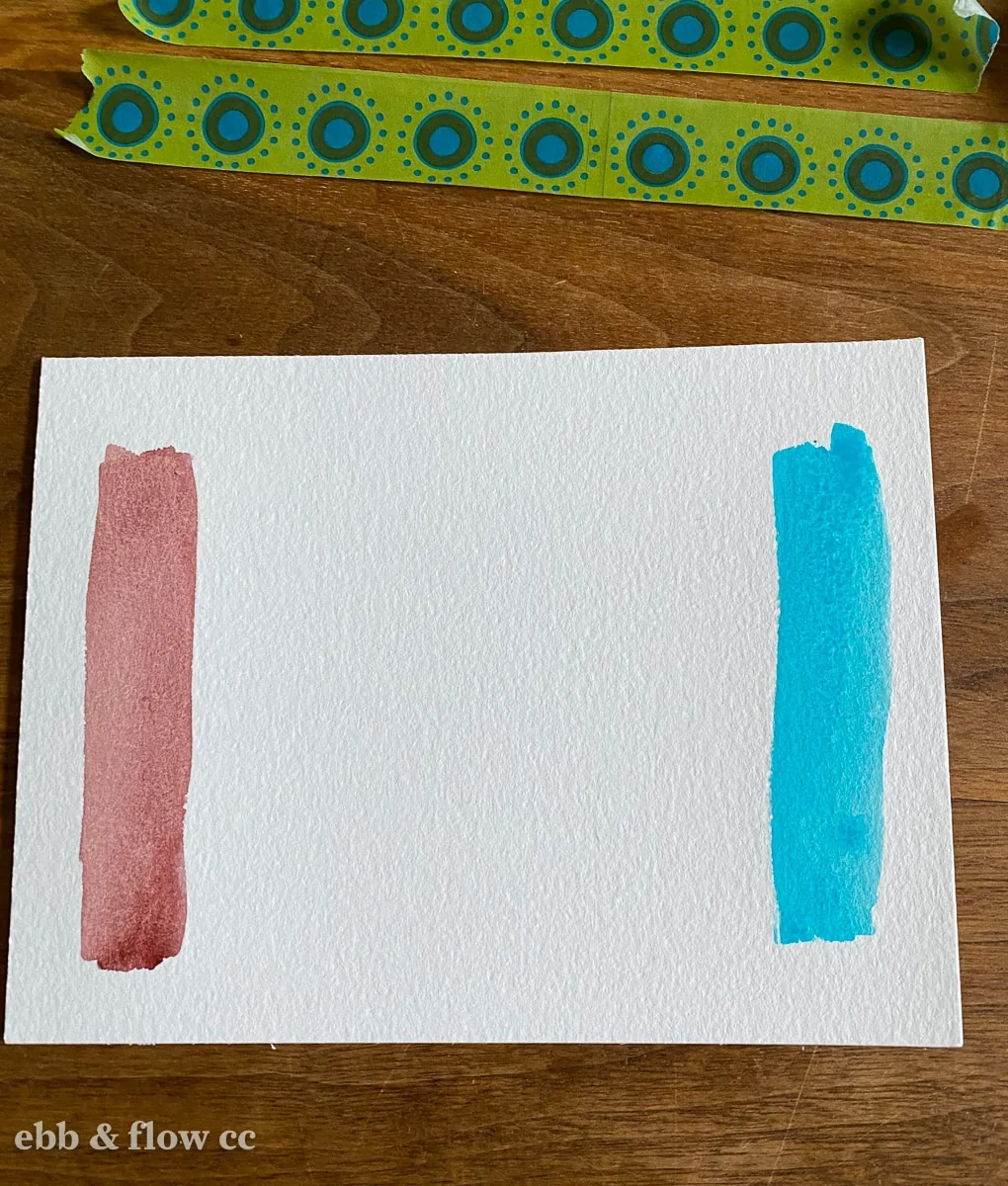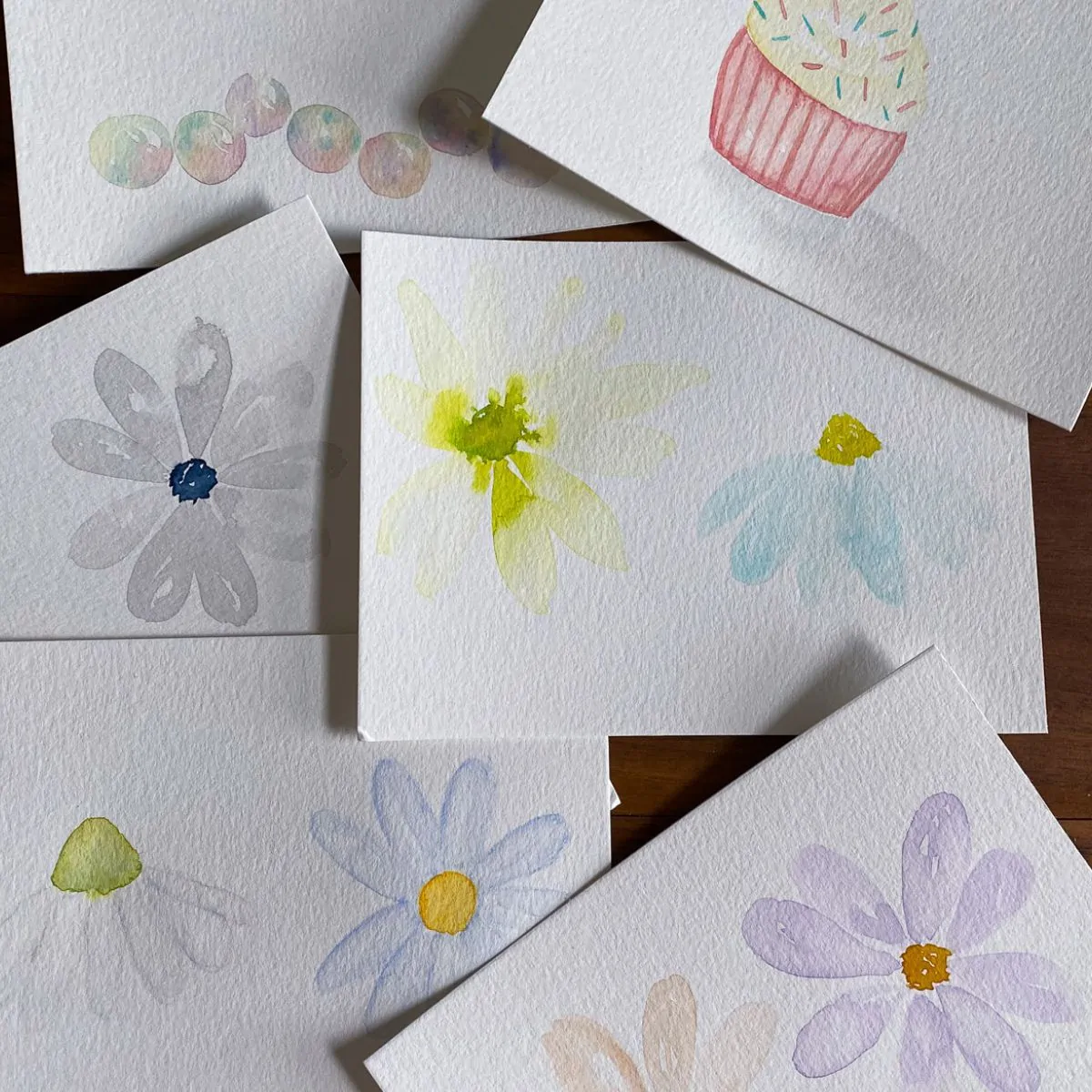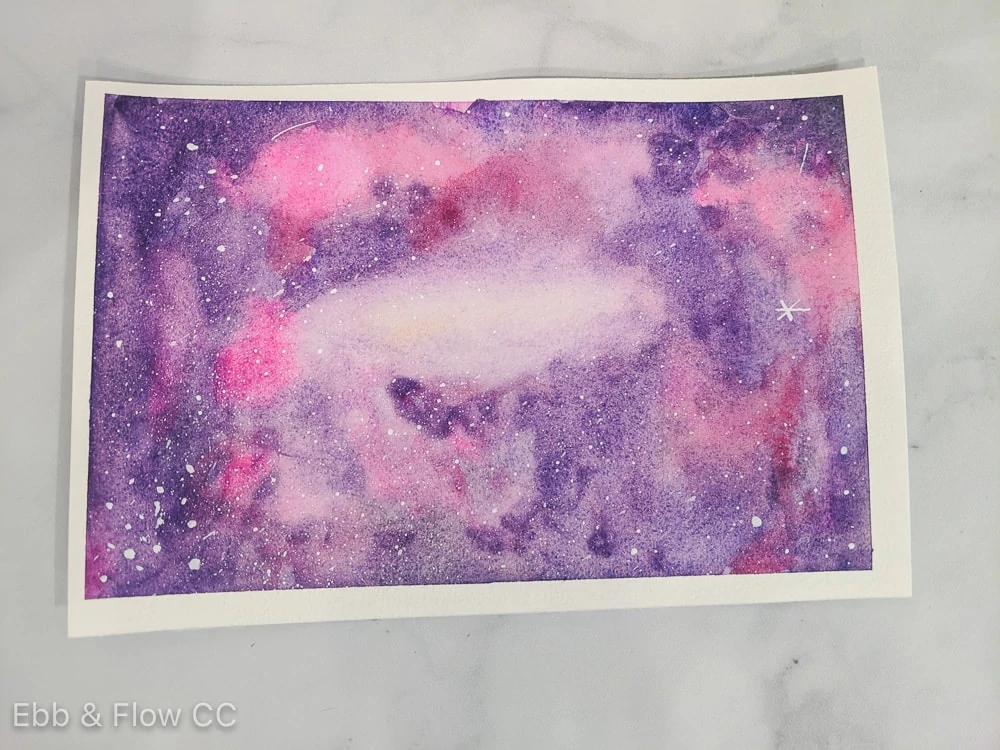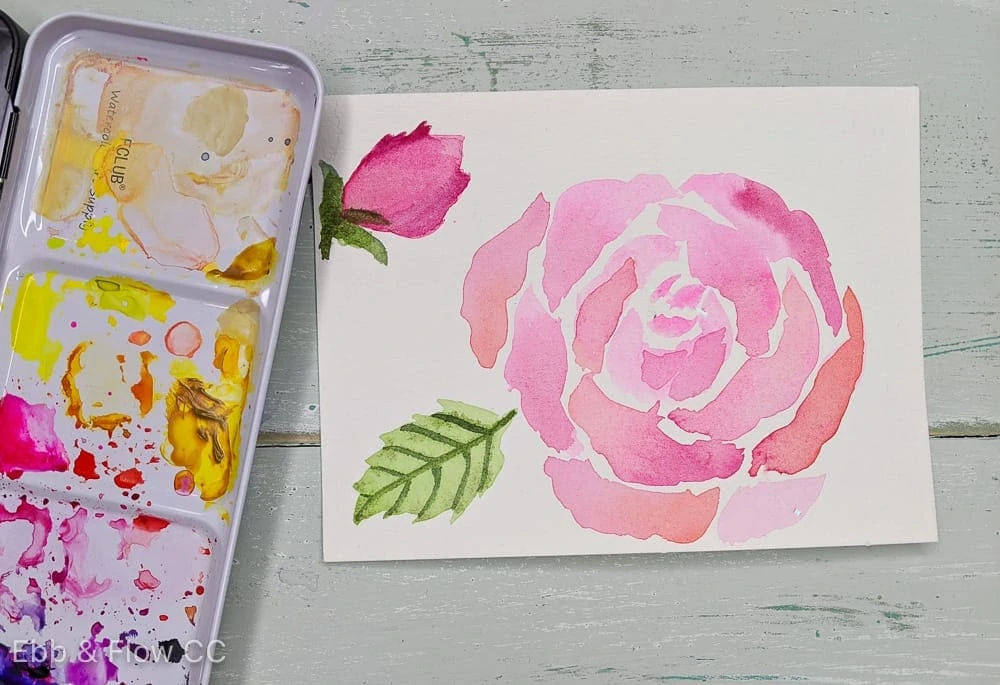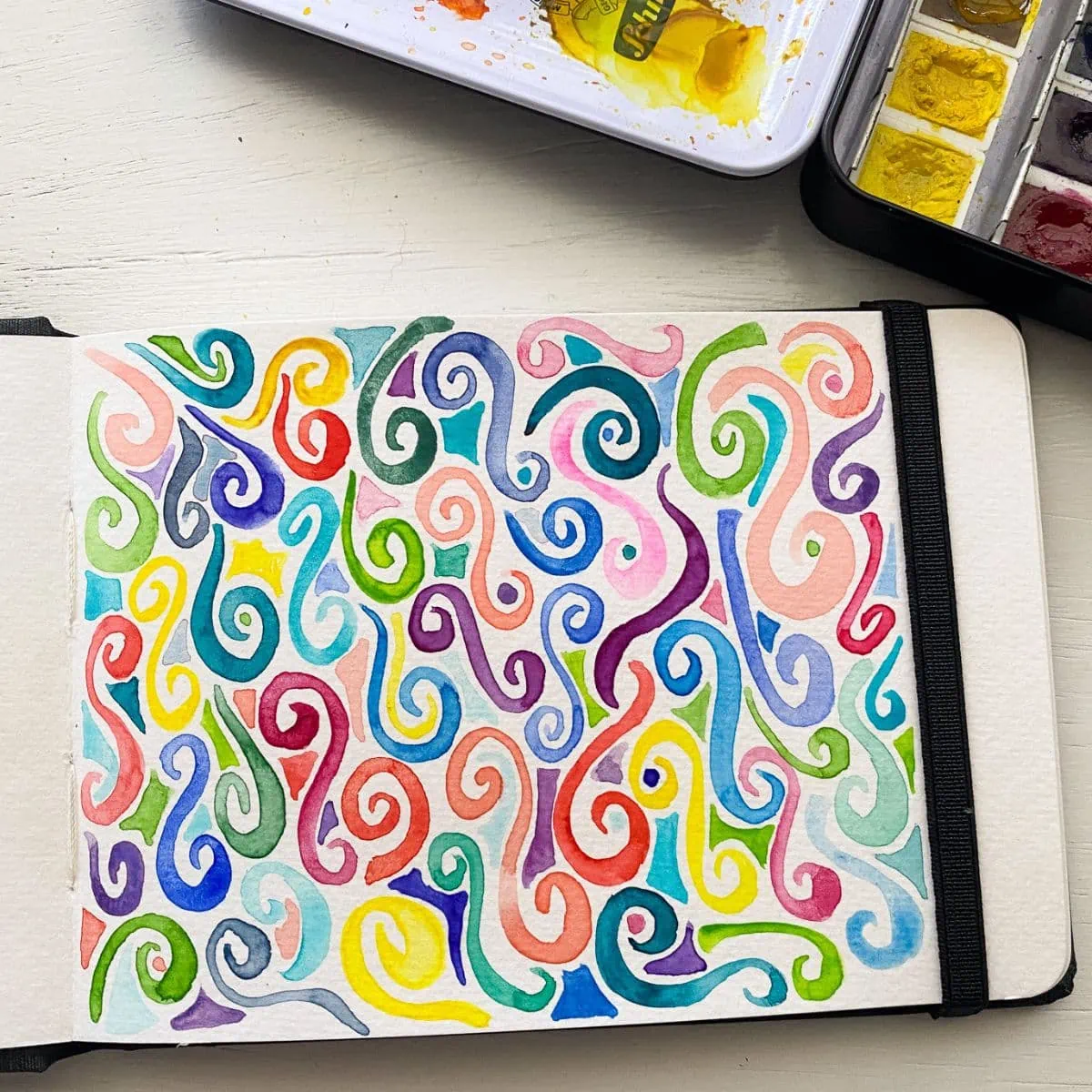Easy Abstract Watercolor Painting Ideas
Not sure what to paint? Try some easy abstract watercolor painting ideas. These ideas are perfect for warming up or for filling a sketchbook.
Get more watercolor painting tutorials.
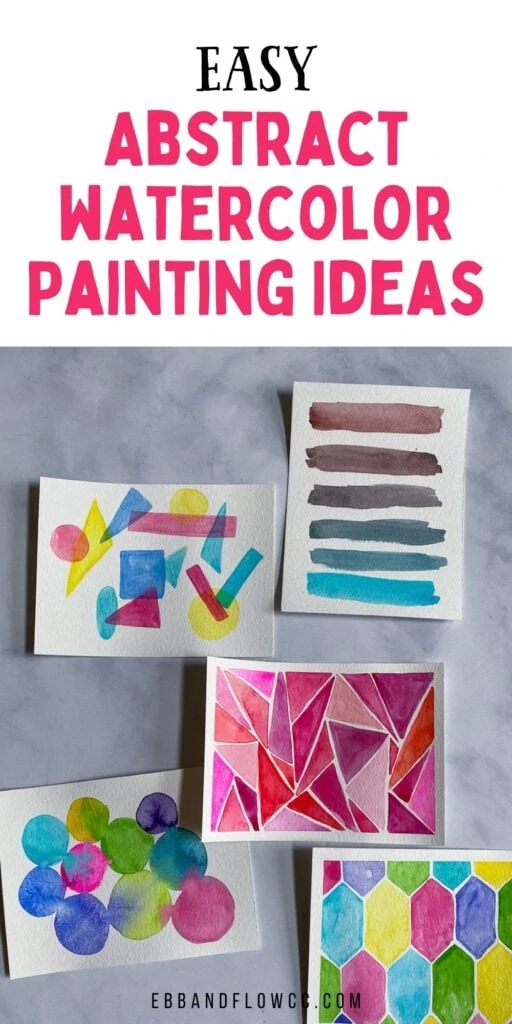
This post contains affiliate links. By purchasing an item through an affiliate link, I earn a small commission at no extra cost to you. As an Amazon Associate I earn from qualifying purchases.
These are fun ideas to paint when you don’t know what to paint.
None of these painting ideas require special skills or previous knowledge about painting. Each of these paintings will teach you more about how watercolor paint works, though.
Easy Abstract Watercolor Painting Ideas
Supplies Needed:
- Watercolor paint
- Watercolor paper
- Watercolor brushes
- Mixing palette
- Washi tape
- Optional: ink, colored pencils, pens
I used my custom paint palette and my Schminke palette, but you can use whatever paint you have on hand.
Learn more about watercolor supplies for beginners.
Painting Ideas
The most important thing to know about these painting ideas is that you shouldn’t strive for perfection. If your colors accidentally touch and run, that’s okay! It’s part of the beauty of watercolor paint.
If you like this post, you will love my easy watercolor landscape ideas.
Layered Shapes
I love painting layered shapes because it’s fun to see how the colors interact when they are layered.
This works best with a limited palette. I generally use “primary” colors but feel free to get creative with your primary colors.
This technique relies on patience and allowing the paint to dry before adding new layers, but it can be fun to let the colors flow into each other as well.
- Paint shapes in primary colors.
- Let them dry completely.
- Layer other colored shapes on top of the previous shapes.
- Continue painting until you’re finished.
You can also paint more organic shapes and add more colors, like the example below in my sketchbook.

Hexagons
This idea and the next will help you work on brush precision. It’s also a good way to see which colors you prefer to use together.
I like to paint freehand, but this is also fun if you neatly draw it out first with a pencil. (Be sure to erase because pencil lead becomes permanent once it’s wet.)
You can work with different colors or you can work with just tones of one color, like the example in my sketchbook.
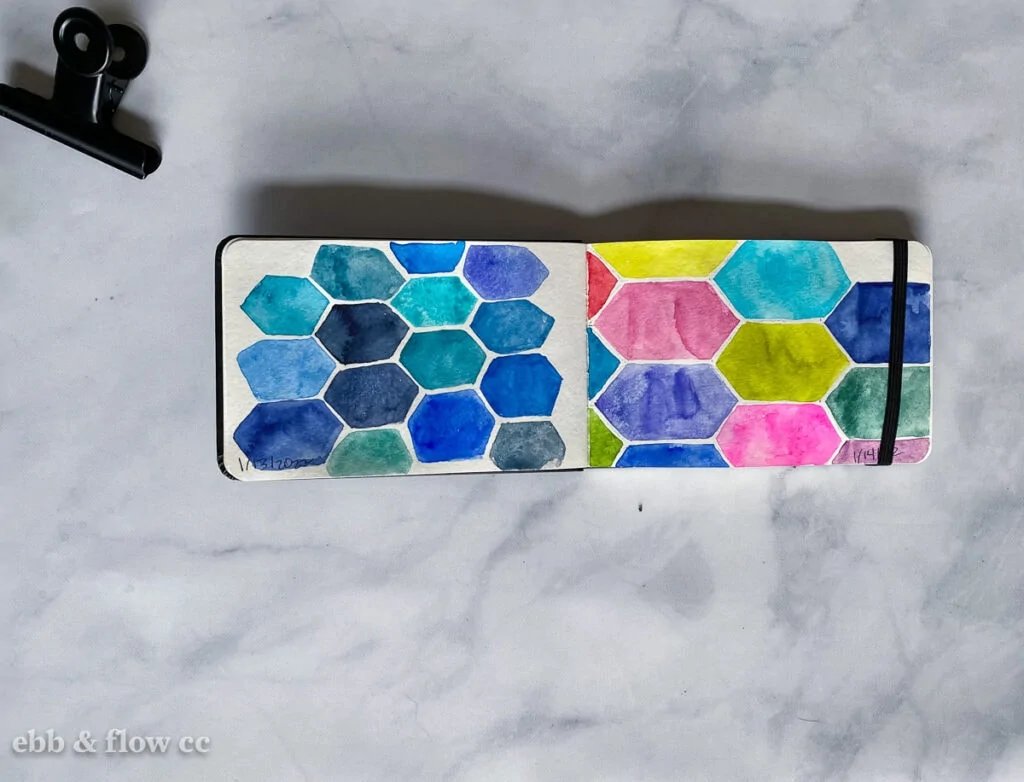
One more note: my hexagons are pretty wonky and get wonkier as I go. I don’t hate this. But you might. Experiment and see what you like.
- Tape off the edges to prevent the page from buckling.
- Choose a color and start painting a hexagon.
- Choose another color and paint another hexagon beside it, leaving white space between the shapes.
- Keep going, filling up the page.
- Remove the tape when you’re done.
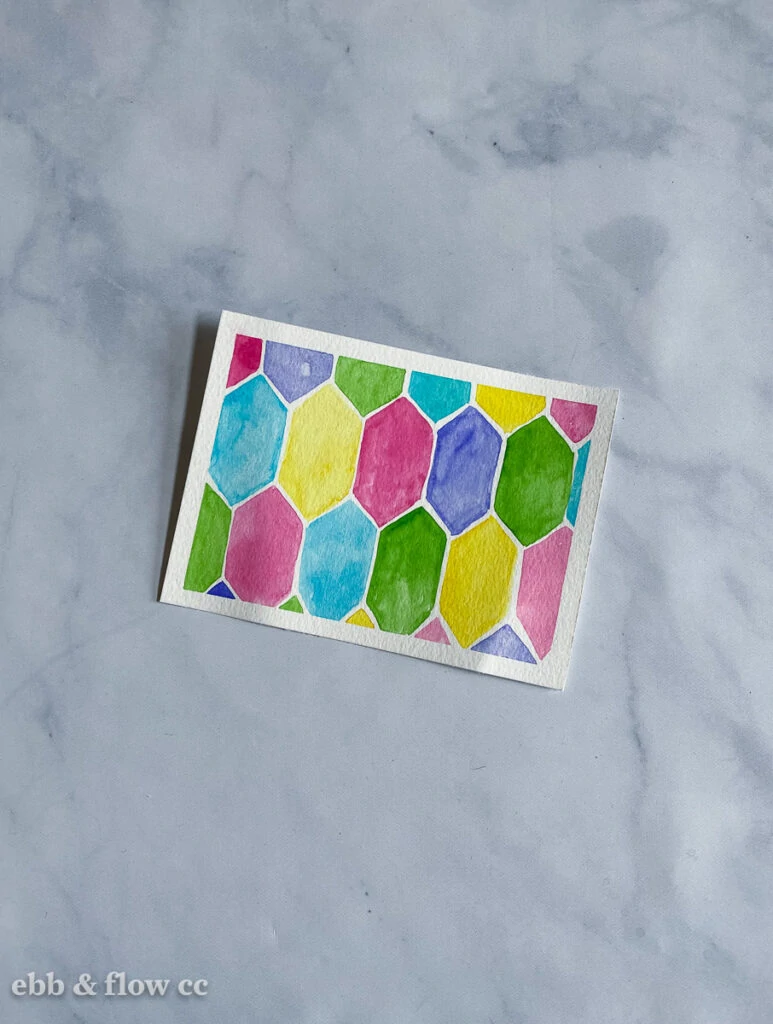
Triangles
This is very similar to the technique above, except that your triangles will be different shapes and sizes.
I used shapes of pink and red for this technique, but it’s also fun in different colors, like I used in my sketchbook:

If desired, you can use a thin washi tape to create perfect lines.
- Tape off the edges of your paper.
- Start painting triangles in different colors, leaving space between the shapes.
- Fill the page with different shapes and sizes.
- Keep going until you fill the page.
- Remove the tape.
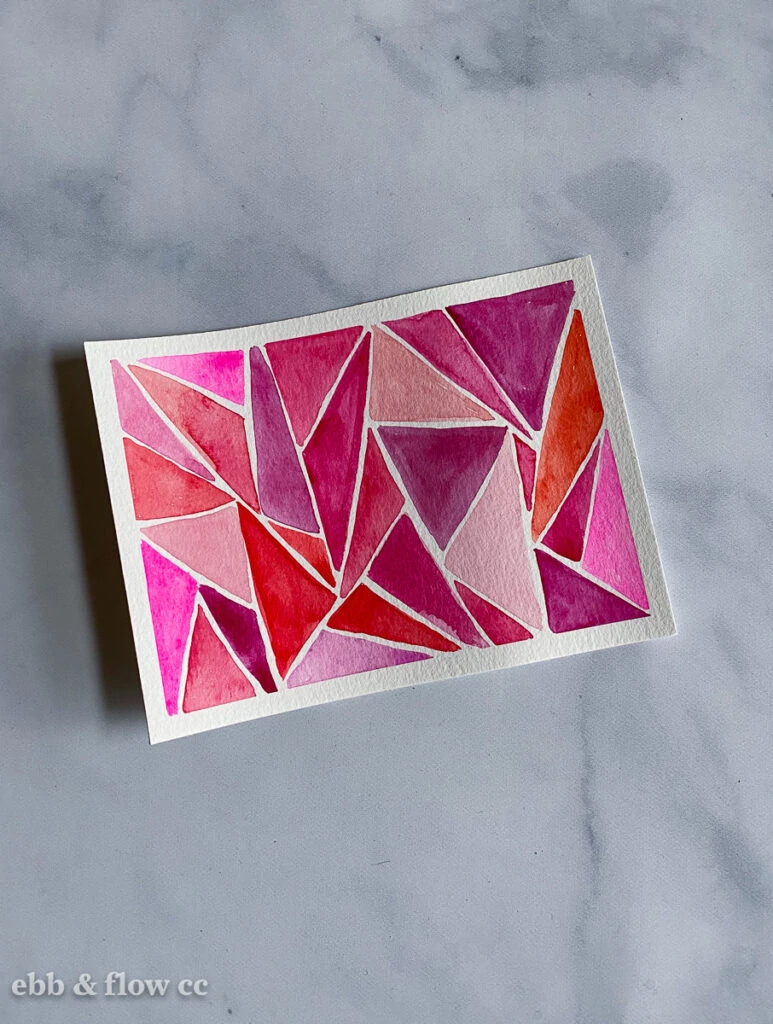
Circles
This is a fun way to experiment with how wet watercolor paint flows into other colors. Some colors are much pushier than others.
This will also vary depending on what brand of paint you use.
- Paint a circle and pool the paint at the edge where it will touch another shape.
- Paint another circle in a different color next to the first color, slightly touching the edge to allow the paint to flow.
- Don’t forget to pool the paint at the edge in the 2nd circle.
- Keep adding circles, letting the paint flow into each other.
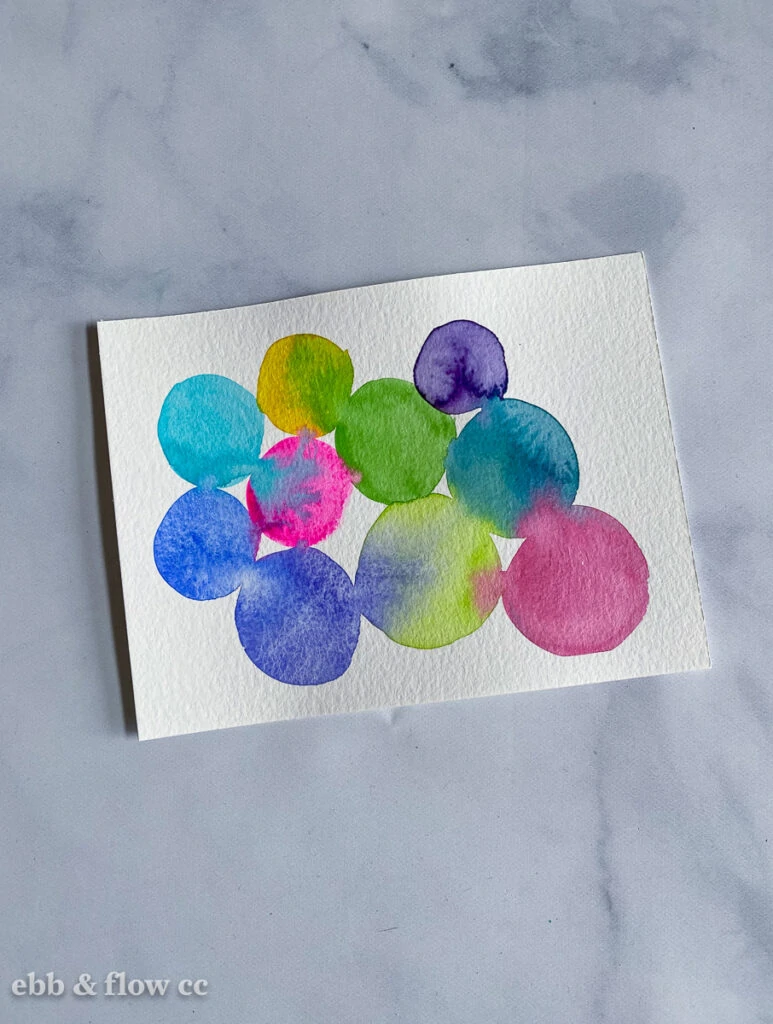
Paint Mixing Swatches
This is a great way to see how colors mix when you add different amounts of each color to the mix. I happen to think that the result is really beautiful to look at as well.
You can choose 2 colors that are known to mix well, but I think it’s more to mix 2 colors that would never be recommended to mix together.
Bonus points if one of the colors granulates. (Granulate means that the pigments separate as they dry and create an interesting texture. Known granulating colors are ultramarines, cobalt colors, Potter’s pink, Mars black, and some earth tones, like this Venetian red.)
I used Schminke Venetian Red and Cobalt Turquoise, which are both granulating colors. They are almost complementary colors, so the results are pretty interesting.
I also like mixing colors like perylene green and purples and phthalo green with quinacridone magenta.
- Paint the first color in a large swatch.
- Paint the other color at the end of the paper.
- Using a mxing palette, add a lot of the first color and a drop of the 2nd color.
- Paint a swatch with that color.
- Keep adding more of the 2nd color and adding swatches until you get a gradient to the 2nd color.
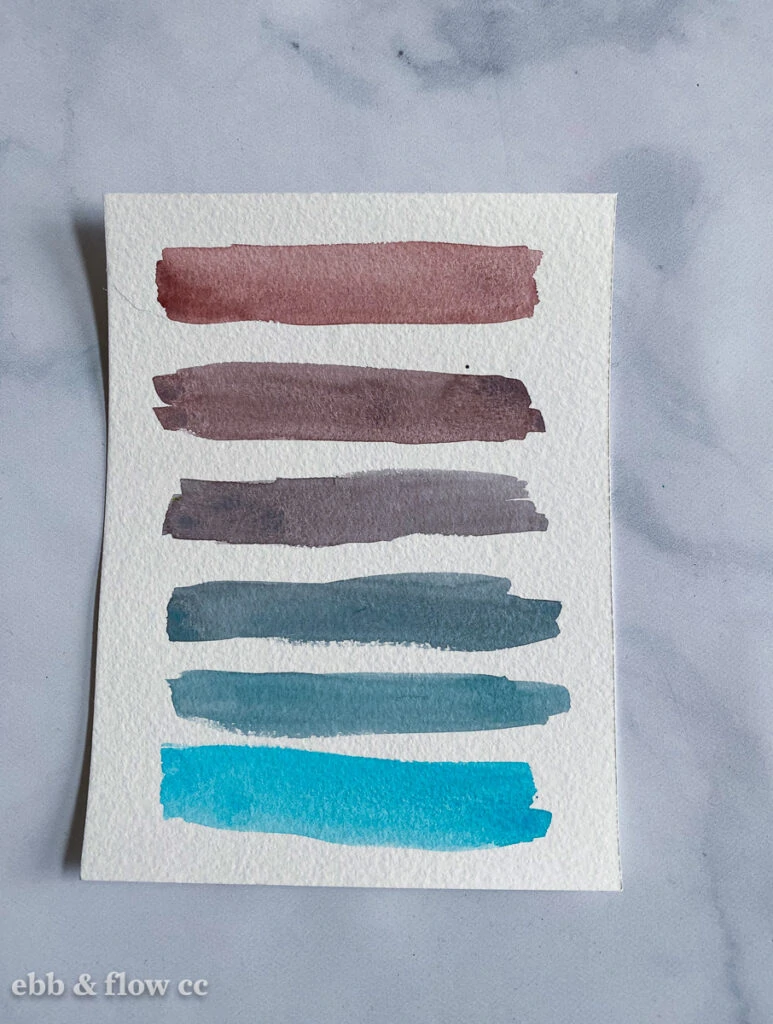
This can also be done in a more freeform way, mixing colors and adding swatches, even diluting the colors as you go until you end up with a large range of the color mixes from 2 colors.
Alternative Ideas to Make Your Paintings Unique
Trying new things is how we develop our style and artistic preferences.
- Try sketched out shapes as well as free-handed shapes.
- Use different color schemes: monochromatic, tetradic, analogous, etc
- While the paint is wet, drop a contrasting color into the wet paint.
- Try adding marks with ink or colored pencils on top of the shapes once the paint dries.
- Experiment with outlined shaped vs non-outlined shapes.
- Add splatter.
- Add gold or other metallic details
You Might Also Like:
Pin for Later!
